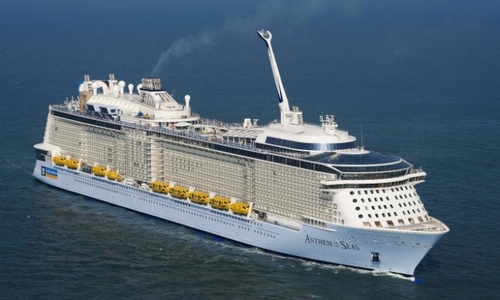
Several years ago, a modern cruise ship—one of those vessels with ten or more decks soaring high into the sky above sea level—was being steered by a junior officer who proceeded to make too sharp a turn. The ship keeled over to such an extent that passengers in a dining room were almost thrown off their chairs. The ship came close to capsizing (but didn't).
At the time, I ventured a thought that these new cruise ships were possibly top heavy, that they contained so many decks as to make their equilibrium a bit shaky. But my amateur concerns obviously didn't reach the offices of the various ship designers. Responding to the commercially minded CEOs who wanted larger, ever-higher, 6.000-person ships, such new vessels as the Anthem of the Seas and the Allure of the Seas were designed to have no fewer than sixteen decks—that's 16, if you can believe it—soaring up into the air. The new ships look like a giant, narrow, slab of metal, overwhelming the area that lies under the water.
I thought of my earlier wild-stab of opinion—my theory that modern cruise ships might be top heavy—when I read an article in this past Sunday's New York Times by a journalist who had been sent on the cruise to the Bahamas of the ill-fated journey of Anthem of the Seas. You may recall that this new ship, carrying a total of six thousand passengers and crew and sporting no fewer than sixteen decks, sailed right into a hurricane. And for what seemed to that journalist like an hour (other passengers claimed it was closer to four hours, and in 150 miles-per-hour winds), the Anthem of the Seas listed so badly (passengers estimated it was a 40% tilt to the side; some passengers claimed it was 45%) from the effect of the winds that the New York Times writer feared it would capsize and all aboard would drown.
As it was, the 40-or-45-degree list of the ship caused this person to fall out of his bed, and for various cabin items—including two glasses in the bathroom—to be hurtled from their shelf and smashed into smithereens.
Is the Anthem of the Seas top heavy? Are these giant new ships with no fewer than sixteen decks, unsafe in a bad storm? Are the tragic fates of the Titanic and, more recently, the Costa Concordia, about to be re-experienced (although the latter two scraped upon either an iceberg or portion of the sea bed, rather than being blown over by hurricane-force winds).
If you will turn to various Internet search engines dealing with cruise ship safety, you will read statements by one maritime expert after another that such concerns are unwarranted; such accidents don't happen. Cruise ships are supposedly built to avoid capsizing, according to them. These maritime experts, whose livelihoods depend on successfully persuading the public that all new giant cruise ships are safe, never once refer to any actual experiments conducted by sea designers to reach such reassuring conclusions. Have small model cruise ships been sailed into a wind tunnel to determine their ability to withstand extraordinary winds? If they have, the maritime experts never cite a single such experiment. Instead, they seem to rely simply on their own gut instincts based on years in the industry.
But we now have the actual experience of the Anthem of the Seas to contemplate. It reportedly keeled over to a 40% or 45% extent, based on the hurricane-force winds it encountered.
Suppose those winds, as bad as they were (150 mph), had been even stronger, as they have been on occasion (during Hurricane Wilma in 2005, they reached 175 mph; during Hurricane Nancy in 1961 they reached 215 mph). Suppose climate change has increased the number and strength of hurricanes threatening ships at sea?
Prior to the recent incident with the Anthem of the Seas, these speculations could have been dismissed as the fears of a crank. But now we have the actual 40-to-45% tilt of that remarkably tall ship in winds of only 150 miles per hour. Is it now time to ask the ship-designers what would have happened to the Anthem of the Seas in a stronger wind?





